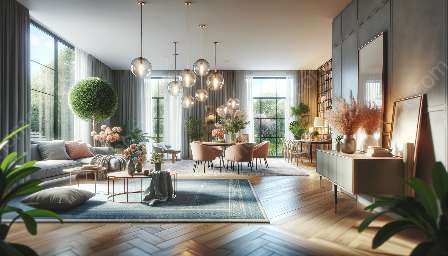When it comes to creating an attractive and inviting living space, furniture placement and arrangement play a crucial role in home staging, selling strategies, and interior decor. By strategically positioning furniture, homeowners can maximize the appeal of their living spaces, creating an environment that is both aesthetically pleasing and functional.
Understanding the Importance of Furniture Placement
Proper furniture placement is essential for creating a cohesive and harmonious interior design. It involves arranging furniture in a way that allows for smooth traffic flow, balances the room's proportions, and enhances the functionality of the space. Effective furniture placement can instantly elevate the overall appeal of a room and contribute to a seamless and comfortable living experience.
For homeowners looking to sell their property, well-planned furniture placement can make the home more appealing to potential buyers. It helps them visualize the potential of the space and enables them to imagine themselves living in the home.
Integrating Furniture Placement with Home Staging and Selling Strategies
Home staging is a strategic approach to presenting a property for sale, with the aim of appealing to a broad range of potential buyers and maximizing the property's value. A key aspect of home staging is optimizing furniture placement and arrangement to showcase the home's best features and create an inviting atmosphere. This involves decluttering and depersonalizing the space, as well as strategically placing furniture to highlight the room's functionality and flow.
When integrating furniture placement with selling strategies, it's important to consider the target demographic and create a space that resonates with their lifestyle and preferences. This may involve rearranging furniture to create distinct living and dining areas, emphasizing natural light and views, and showcasing the potential uses of different rooms.
Enhancing Interior Decor through Furniture Placement
Furniture placement is a fundamental aspect of interior decor, influencing the look and feel of a room. Whether aiming for a cozy and intimate setting or a spacious and open layout, the way furniture is arranged can significantly impact the ambiance of a space. By considering factors such as scale, balance, and focal points, homeowners can create visually appealing arrangements that complement their chosen decor style.
For those looking to refresh their interiors without major renovations, experimenting with furniture placement can provide a cost-effective way to bring new life to a room. From creating conversational groupings to optimizing traffic flow and creating visual interest, strategic furniture placement can transform a space and enhance its overall aesthetic appeal.
Practical Tips for Effective Furniture Placement
- Begin with a focal point: Identify a focal point in each room, such as a fireplace, large window, or prominent piece of furniture, and arrange other pieces around it to create a balanced and visually appealing layout.
- Consider traffic flow: Arrange furniture in a way that allows for easy movement and encourages a natural flow of traffic throughout the room. Avoid obstructing pathways and entrances.
- Proportional balance: Ensure that furniture pieces are proportionate to the size of the room. Avoid overcrowding smaller spaces and use furniture of appropriate scale to maintain balance.
- Define functional zones: Clearly delineate different functional areas within a room, such as seating areas, dining spaces, and entertainment zones, to optimize the usability and appeal of the space.
- Maximize natural light: Position furniture to take advantage of natural light and ensure that windows are not obstructed. This enhances the overall ambiance of the room and creates a more inviting atmosphere.
By incorporating these practical tips, homeowners can effectively enhance their home staging, selling strategies, and interior decor through thoughtful furniture placement and arrangement. With a keen eye for balance, functionality, and style, they can create living spaces that are both visually appealing and conducive to the needs of their household.


